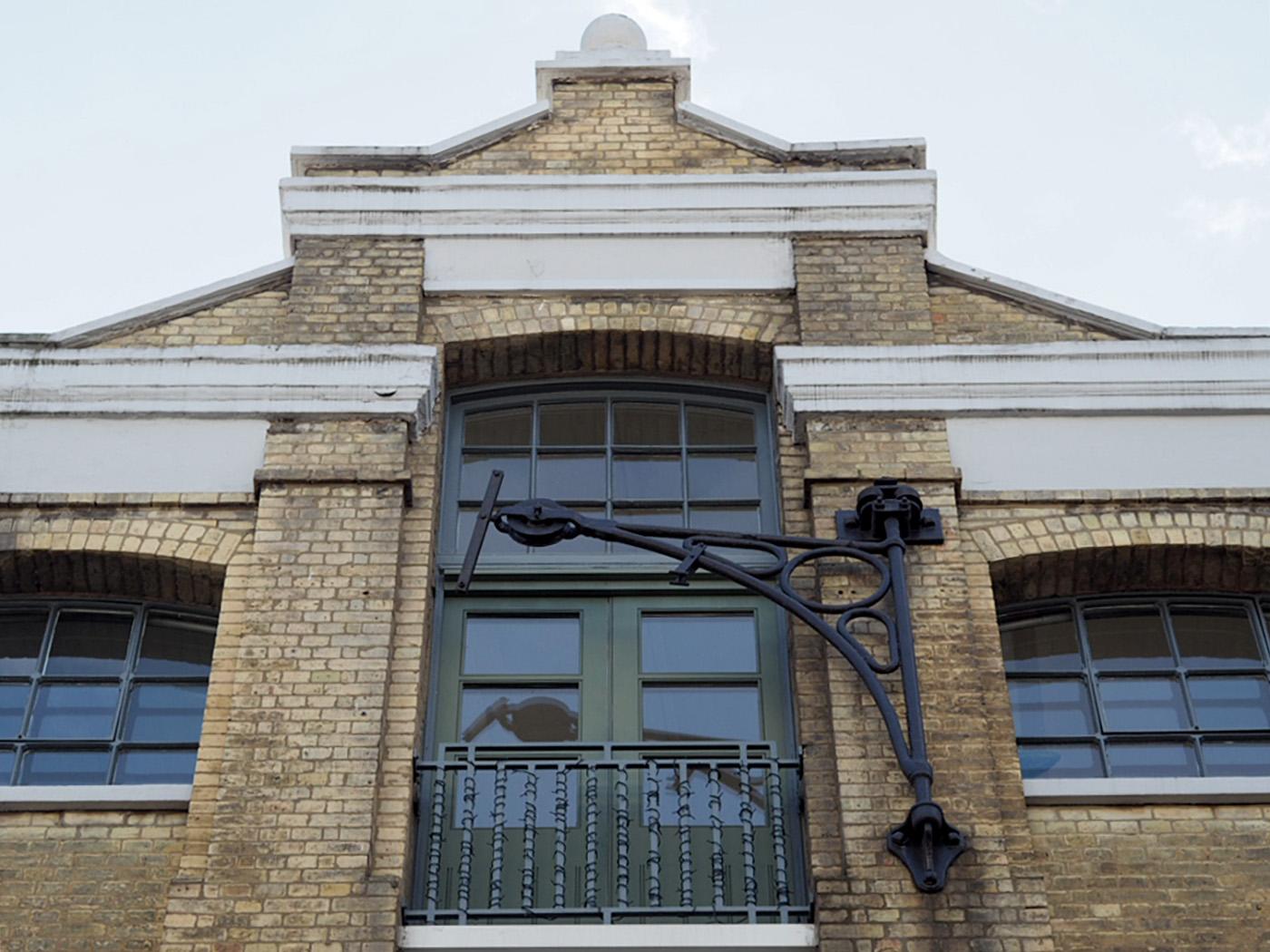
Towards a new reuse model
Link to article featured in The Property Chronicle
An engaged response to a passing Tweet, ‘Why do we fetishise plain old buildings?’
As someone who has built a business sourcing, acquiring, and adapting a variety of building types over the years, this question provoked an immediate reaction from me. As an advocate for adaptive reuse, I have felt strongly about fighting to protect our built heritage for years – but an even greater reason to do so has emerged that will change how we measure the value of old buildings for good…
Continuity and identity
The last month has given us great cause to stop and reflect on the historic institution of the British monarchy. No one could watch the late Queen’s funeral procession advancing slowly down Whitehall, or view her coffin lying in state in Westminster Hall – one of the most historic rooms in one of the most historic buildings in Britain – without considering the role of the Royal Family in British identity, both nationally and on the global stage.
The Queen was the longest-reigning English monarch and a cornerstone of the national identity. Her commitment to her people and her country were rightly celebrated and lauded, her forbearance and sense of duty held up as quintessentially British qualities.
And time and time again in the days after her death, we heard members of the press, Parliament and public talking about how she provided the nation with a sense of continuity – a constant, unchanging reference point to look to in a fast-moving, ever-changing world.
That is the role of monoliths and monarchs – to be constants amidst the flux. Tradition casts a powerful spell. We pass traditions from generation to generation, nurturing and respecting them, and are grateful for the sense of meaning and belonging they impart.
The role of our built heritage
In some ways, our built heritage plays a similar role. Historic buildings can provide a sense of history and continuity that is closely connected to questions of national and individual identity.
But buildings do more than that. They provide a narrative through line for our cities, a physical embodiment of the idea of continuity. A building is a moment captured in time – many layered moments, actually – and holds within itself something of culture and the building blocks of a society.
In London, our rich patchwork of buildings, from the historic to the hyper-modern, tell us about the capital and about ourselves. People designed, built and used these buildings. Lived and worked out their lives within these walls. Their feet crossed “the ancient floor, Footworn and hollowed and thin”, and we feel closer to them, and somehow closer to London, when ours do the same.
History in physical space
Our engagement with these buildings, then, is ultimately about engagement with our history. To put that another way, it’s to do with finding our place in the city – working out how and where we fit amidst so many centuries of people and their stories.
Our built heritage is more than light and mass. Buildings are a connection point – to a bygone age, to London and to ourselves.
An individual’s connection with a specific old building can take many forms – emotional, nostalgic, literary – but those connections are very real. Perhaps we turn more to these physical touchstones in times that make us feel disconnected from the city, or that shake our sense of individual or national identity – post-pandemic, for example.
Save a building, save the world
Buildings of architectural or historic interest were first protected by statute in 1947. The early conservationists and the SPAB were successful in raising awareness of the value of these buildings, and we owe them a great debt – as a result, at least in part, of their hard work we are fortunate that many of our most celebrated buildings have been preserved.
Seventy-five years on, we live in a vastly different world – and we are faced with a more scientific reason to protect our buildings, particularly in London…
The Whole Life-Cycle Carbon Assessments brought in by the GLA in March of this year have thrown into question another field of inquiry – one in which the age or beauty of a building, and/or the extent to which we feel a societal connection with it, are not the primary measures.
This marks a significant sea change in planning approach – and a real turning point for building in the capital. This first became apparent to the public with the refusal of The Tulip, Brazilian billionaire J Safra’s proposed 305m-tall skyscraper in the Square Mile.
Planning for the project was refused, despite significant backing and the full expectation that it would be green lit. ‘Embodied carbon’ was cited as a major driver of that refusal, despite never having been cited as a concern on such an application previously.
Although there is still no standard mechanism in place to measure the embodied carbon cost of all construction, the Government has committed to reaching net zero by 2050 and at COP26 committed to achieving 68% reductions in carbon emissions by 2030. As demonstrated by the refusal of The Tulip – and the calling of several other major projects in for inquiry, including Make’s £700m plan to demolish the ITV Tower – these government targets are about to bite.
With 25% of the UK’s total greenhouse gas emissions attributable to the built environment, our sector is an area of policy where change will have a lasting impact.
With this emphasis shift, our planning policy is beginning to reflect the principal set out by the Environmental Audit Committee, that:
“… retaining existing built structures for reuse and retrofit, in part or as a whole, should be prioritised before considering substantial demolition, as this is typically the lowest-carbon option. Significant retention and reuse of structures also reduces construction costs and can contribute to a smoother planning process.”
Layers of meaning and connection
As Londoners – and as human beings – we innovate. We change. We adapt to survive. There has always been a philosophical case for adapting buildings for new uses, but new priorities, pressures and ways of working have necessitated urgently making reuse a more fundamental part of our strategy to reduce emissions.
At the same time, our love and appreciation of the layering of human and built history in our city also endures. Our desire for substance, connection and authenticity are stronger than ever in an increasingly disconnected and digital age, and that has only been exacerbated by the ‘lost years’ of the pandemic. Our ‘obsession’ with old buildings continues to take on new layers of meaning.
One thing is clear – somewhere along the line, conservation has met hard science and necessity. Whole-Life Carbon Assessments will soon be built into the planning system at policy level and will soon feature in building regulations.
Towards a new reuse model
For me, it is easy to see why these old buildings resonate – it is less easy, in some circumstances, to understand why they should be preserved in the face of massive demand for more efficient residential spaces in our cities.
We face two great challenges in our lifetime – urbanisation and climate change. We must be open to adapting our existing buildings, but we can’t afford to fetishise them. Finding a balance is critical if we are to meet the Government’s ambitious housing targets.
And we should remember, too, that there is justification for demolition in some cases. The Dorman Long tower, on the former Redcar steelworks site, was a characterful local landmark. It was demolished – despite considerable opposition – in 2021. It was a sorry conclusion for Dorman Long, but one that, I believe, was justified. Carbonation and corrosion were the verdict and in the end the tower’s downfall, but it perhaps doesn’t need saying that the average coal bunker is less than suitable for adaptive reuse. The site now has the potential to be put to better use.
According to the Green Alliance, “long-term vacant properties could meet between 14 and 46% of new housing needs by 2030”. Our building designers and developers must embrace this great challenge and harness the value of our built heritage. Policy will need to adapt to allow for more flexibility in terms of use if we are to find alternative solutions that are viable. This is where the benefits of retaining a building can meet to provide housing where it is needed most.
Demolition now comes with a health warning for us all, but particularly for developers where there is a case for reusing an existing building.
The arguments put forward for the demolition of the M&S building on Oxford Street, for example, are robust – an excellent try, but they might not win the last brownie. The people that have shone a light on this case are more deserving.
The difficulty, as ever, is effectively communicating the potential damage. For most, the reasons for protecting our real estate are not tangible – and the estimate of 40,000 tCO2e is impossible for us to comprehend. Simon Sturgis is damning on M&S’s argument for demolition and as a specialist adviser to the Government’s sustainability of the built environment council, it’s worth taking note.
Our built heritage is fundamental to our sense of ourselves and of London. Old buildings are points of connection, stories written in brick. They shouldn’t be fetishised – but they must be protected, adapted and celebrated where viable; our built heritage is now intrinsically linked to our survival.
Ed Marsh, Founder, for The Property Chronicle
